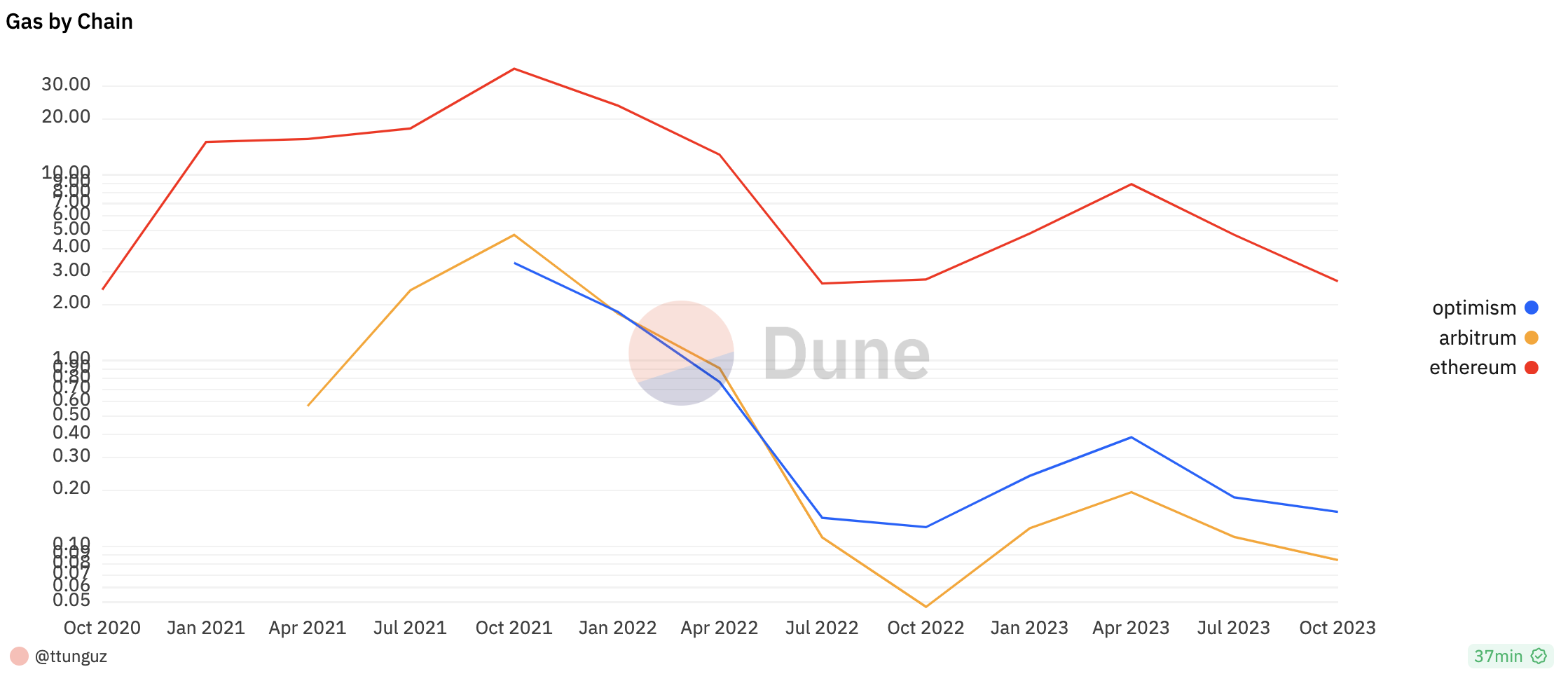In 2021, Amazon announced they had reduced prices on Amazon Web Services 107 times since launch.
This drop in prices has grown AWS into a $90b revenue business in 17 years. As storage & compute became less expensive, the economic viability of new use cases became increasingly apparent & developers built software on the cloud.
The same cost-reduction phenomenon is occurring with blockchains, though it’s not nearly as well
publicized.

The cost to save data to a blockchain is called gas. In 2021, at the peak, the
average quarterly gas fee on Ethereum reached about $37. To send a file (an NFT
perhaps) to a friend, cost the user
$37.
Some days that figure soared about $70.
At those prices, not many transactions are economically viable. Compare that to
AWS’ managed database, Aurora, which charges $0.0000002 per
request. (I’m ignoring the storage
cost here).
However, over the last few years, we have seen a meaningful reduction in the
cost per transaction. First, Ethereum overall has fallen from $37 to $2.
Newer technologies called layer 2s, which are faster, less expensive databases
running atop Ethereum have further cut the price to $0.15 for Optimism & $0.08
for Arbitrum.
Some newer blockchain databases like Sui have further pushed that cost to
$0.0019 as of this writing.
| Database | Cost per Transaction in $ | Cost Multiple Relative to AWS |
|---|---|---|
| AWS Aurora | 0.0000002 | 1 |
| Ethereum Peak | 37 | 185m |
| Ethereum Today | 2.67 | 13.4m |
| Optimism | 0.15 | 750k |
| Arbitrum | 0.08 | 400k |
| Sui | 0.0019 | 9.5x |
The trend is evident & inexorable. The cost to store data on block chains has
fallen five orders of magnitude in the last 3 years.
It’s a sort of inverse Moore’s Law – let’s call it Eroom’s Law for fun.
As Eroom’s law continues to progress, I expect we’ll see the cost to store data
h my gosh
on a blockchain approach that of a classic database like Aurora. More (e)room for data for
less dollars.
AWS Aurora has benefitted from efficiency gains since 1986 – 37 years of
development. Ethereum, the oldest blockchain database listed, turned 8 this
year.
Given another few years at this pace of innovation, it’s not unreasonable to
expect blockchains to be cost-competitive to classical databases.
More than that, they offer different types of promises to developers for data
sovereignty, mathematical proofs, resiliency, & resistance to attack.
It’s the gas gas revolution. As the gas costs fall, more applications will be
built on blockchains.
